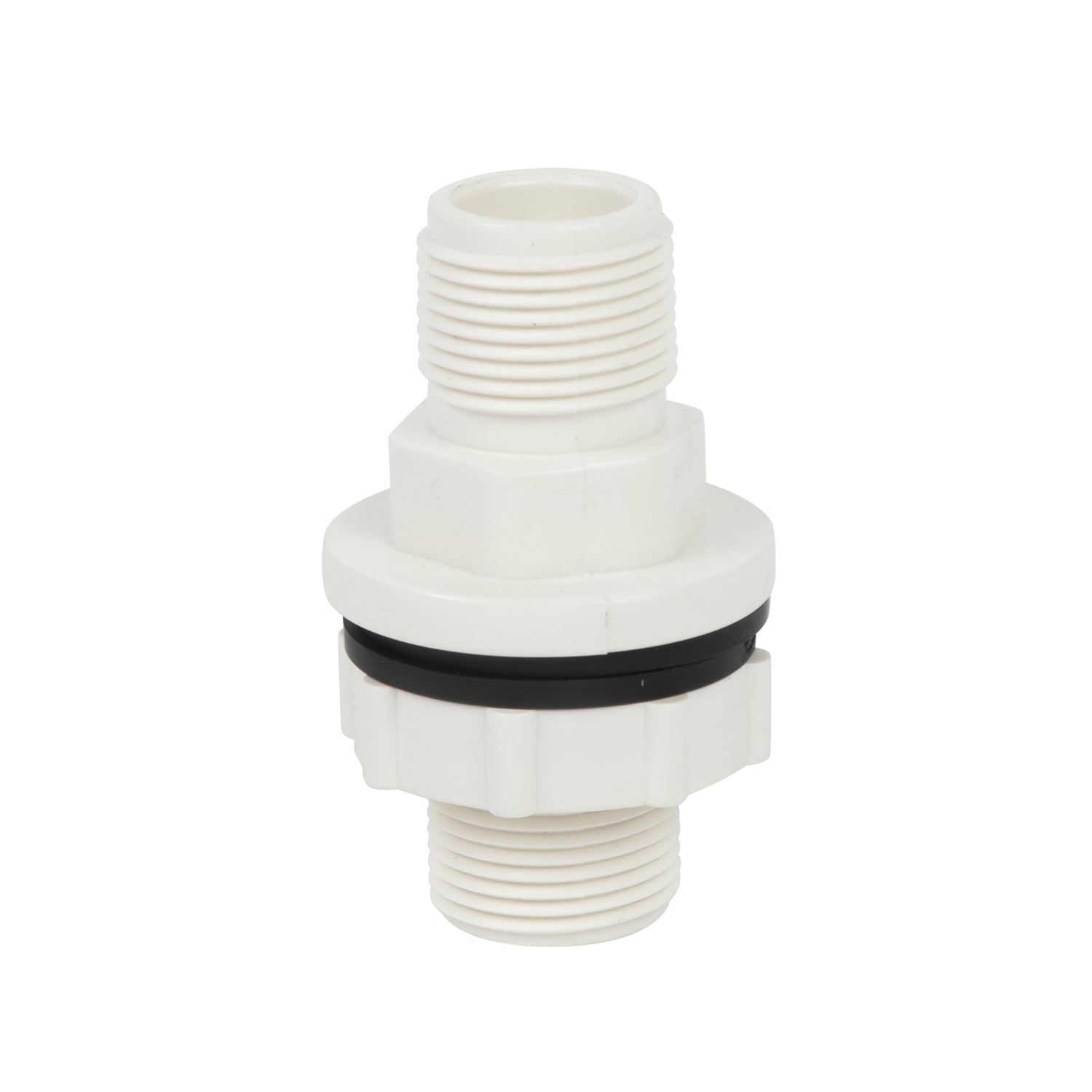


UPVC Ball Valve Specifications
Attribute | Specifications |
Size Range | 1/2" to 8" |
Standards | ASTM, DIN, JIS, BS |
Shape Options | Octagonal ball valve, Compact ball valve |
Connection Options | Threaded connection, Socket connection |
Body Material | UPVC |
Seat Seal Material | TPE |
Ball Material | PP |
Handle Material | ABS |
O-ring Seal Material | NBR |

Characteristic Description
Material Composition
The UPVC body is thickened to withstand high pressure, the TPE seat seal is pressure-resistant and elastic, and the PP ball is reinforced for structural stability under load. The ABS handle is ergonomically designed to handle high torque, and the NBR O-ring is high-pressure rated, ensuring leak-proof performance in demanding conditions.
Structural Design
The ball valve features a reinforced mold design for sizes 2.5" and above, enabling bidirectional opening without compromising pressure resistance. It offers octagonal and compact shapes, plus threaded and socket connections, to fit heavy-duty pipelines. The O-ring is sealed inside the valve body with precision molding, creating a unified structure that resists pressure-induced deformation, a critical advantage over traditional handle-mounted O-ring designs.
Market Research
The heavy-duty fluid control market—including oil & gas, chemical processing, and water treatment—is driven by demand for high-pressure, reliable valves. These industries require valves that can withstand extreme pressures and bidirectional flow, with minimal downtime. North American and European oil & gas sectors adhere to strict ASTM and DIN high-pressure standards, while Middle Eastern chemical plants need valves that operate in harsh, high-pressure environments. This product’s high-pressure testing, bidirectional design, and durable materials make it a competitive choice for heavy-duty applications.
Key Features
High-Pressure Resistance: Tested with 16pn equivalent water pressure (via 24-hour high-pressure air testing), suitable for heavy-duty industrial applications.
Bi-Directional Flow Control: For sizes 2.5" and above, bidirectional opening allows flexible installation in pipelines with reverse flow requirements.
Reinforced Structure: Thickened UPVC body and reinforced PP ball resist deformation under high pressure, extending service life.
Smooth High-Torque Operation: Optimized mold design reduces torque, making handle rotation smooth even under high-pressure conditions.
Performance Meets
Compliant with ASTM, DIN, JIS, and BS high-pressure standards, this valve performs reliably in pressure ranges up to 16pn. It adapts to heavy-duty media such as industrial chemicals, high-pressure water, and petroleum derivatives, with corrosion-resistant materials ensuring stability. The bidirectional design eliminates installation restrictions, while the sealed body structure maintains leak-proof performance in extreme pressure fluctuations.
Customized Service
HJ provides heavy-duty focused customization:
Pressure rating upgrades: Modified materials (e.g., reinforced UPVC) for higher pressure requirements (above 16pn) upon request.
Size optimization: Custom sizes within 1/2" - 8" for large-scale industrial pipelines.
Connection reinforcement: Thickened threaded/socket connections for high-pressure piping systems.
Certification customization: Additional high-pressure certifications (e.g., API) for oil & gas industry compliance.
FAQ
Q1: What is the advantage of bidirectional operation?
A1: Bidirectional opening allows the valve to control flow in both directions, eliminating the need to install it in a specific orientation. This is ideal for pipelines with reverse flow (e.g., chemical mixing systems).
Q2: Can this ball valve be used in oil & gas applications?
A2: Yes. The reinforced materials and high-pressure resistance make it suitable for non-corrosive oil & gas applications. For corrosive hydrocarbons, contact our team for chemical-resistant material upgrades.
Q3: How is the high-pressure testing conducted?
A3: Each valve is injected with high-pressure air equivalent to 16pn water pressure and held for 24 hours. If no pressure drop is detected, it passes the test—ensuring zero leakage in high-pressure use.





